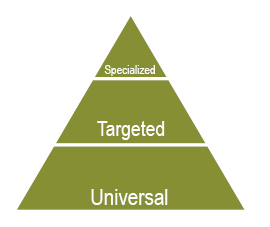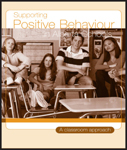
|
Universal Supports benefit all students
- Work with students to develop effective classroom routines and visual reminders for using the washrooms, such as the following.
- For younger students: Incorporate times into the day specifically for washroom breaks, and post a visual schedule of these times. In addition, develop a simple system where students may leave the classroom
one-at-a-time for a washroom break, on an as-needed basis. Design simple washroom passes that are kept near the door of the classroom so students know if another student is already in the washroom.
- For older students: Encourage students to use the washroom before, after and between classes. In addition, develop a simple system where students may leave the classroom one-at-a-time for a washroom break, on an as-needed basis. Design simple washroom passes that are kept near the door of the classroom so students know if another student is already in the washroom.
- Teach, model and reinforce appropriate washroom behaviour for younger students (e.g., washing hands after using the bathroom, drying hands, walking to and from class).
|
|

|
Targeted Supports benefit students with more specific needs
- For students who request to go to the washroom multiple times throughout the day, consult with parents to identify if this is a medical condition or if the student may be using washroom trips (either consciously or unconsciously) as a strategy for avoiding school work or other non-preferred activities. Collaborate with parents to develop a strategy to resolve this issue so that students are able to go to the washroom when they need to, but they are not using it as an avoidance strategy.
- For students who have chronic behavioural difficulties in unsupervised washrooms (e.g., engaging in horseplay, minor vandalism), limit their access to washrooms during breaks when there are multiple students using the washroom. When they request to use the washroom during class time, use the Check in/Check out strategy in which the student checks in with a school staff member and commits to following specific washroom behaviour expectations (e.g., turning off taps, no playing with the soap, returning directly to the classroom without disrupting other students). When the student returns from the washroom, the student checks out his or her behaviour by debriefing with the staff member on his or her return and reporting whether or not he or she was able to follow through on his or her behaviour commitment. This strategy should be done privately and not in front of the other students.
- Develop personalized visual checklists of behaviour expectations related to washrooms and review with individual students. Some students may wish to carry the checklists with them.
- Develop self-monitoring strategies students can use to reflect on and keep track of their own behaviour in the washroom and set up a systematic approach to reinforcement for students who are working on improving appropriate washroom behaviour. Reinforcement should encourage moving toward intrinsic motivation (e.g., "How does it feel when …?").
|
Parents know their children well and can offer insights on how to support
their social and emotional well-being. There is strength in collaborating
on strategies that could be used at home, at school and in the community.
|

|
Specialized Supports benefit the small number of students with sensory, physical, cognitive or behavioural needs that require intensive, individualized interventions
- A student with a moderate/severe disability may require 1:1 adult support to provide with toileting assistance and/or supervision away from the classroom.
|
|








